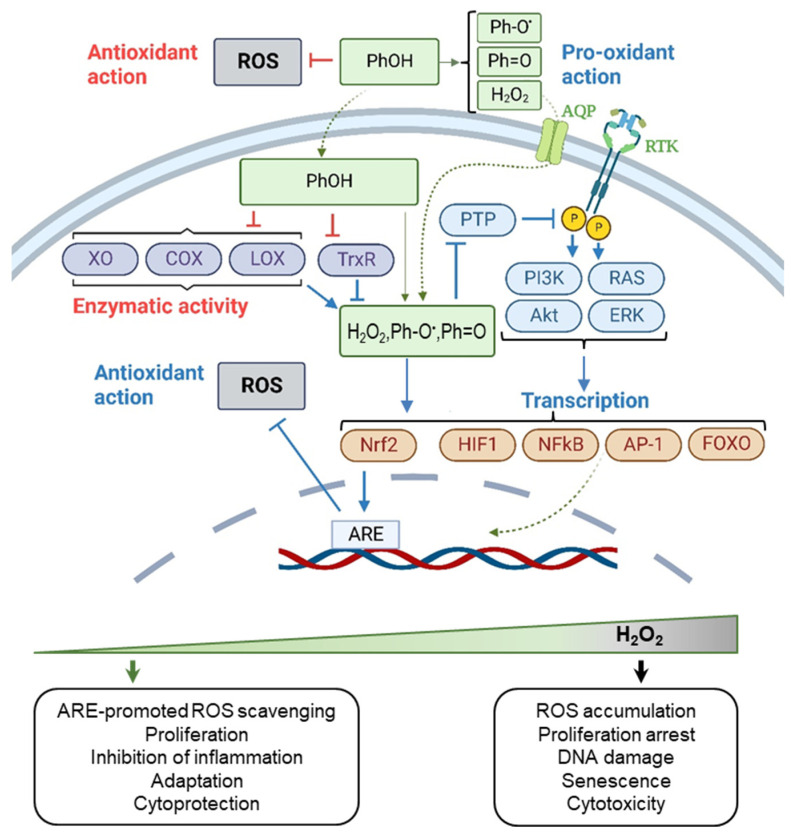Figure 4.
Biological activity and hormetic effects of PPhs. Intracellular activity of PPhs is mainly explained by their capacity to produce pro-oxidants (H2O2, Ph-O•, Ph=O) which cause various hormetic effects in cells. For instance, H2O2, when produced at low concentrations, stimulates multiple signaling events and promotes Nrf2 activation, which is now considered as a main cause of the antioxidant and cytoprotective effect of PPhs both in cell culture and animal model studies. In contrast, at high concentrations, H2O2 can produce harmful effects. Blue arrows mark effects which PPhs can cause both in vitro and in vivo. Red arrows mark processes that can be realized under certain conditions in cell culture experiments, but which have not been proved to occur in vivo (with only one exception—inside GIT after the PPhs’ oral uptake); generally, these effects are difficult to expect in vivo due to insufficient achievable concentrations of PPhs and/or kinetic rate constants of corresponding reactions. Abbreviations: PhOH, reduced polyphenols; Ph-O•, PPh semiquinone radical; Ph=O, PPh quinone; AQP, aquaporin; RTK, receptor tyrosine kinase; PTP, protein tyrosine phosphatase; PI3K, phosphoinositide 3-kinase; Akt, protein kinase B; RAS, Ras GTPase; ERK, extracellular signal-regulated kinase; Nrf2, nuclear factor erythroid 2-related factor 2; ARE, antioxidant/electrophile response element; HIF1, hypoxia-inducible factor 1; NFkB, nuclear factor kappa B; AP-1, activator protein 1; FOXO, Forkhead box O; XO, xanthine oxidase; COX, cyclooxygenase; LOX, lipoxygenase; TrxR, thioredoxin reductase (created with BioRender.com).

